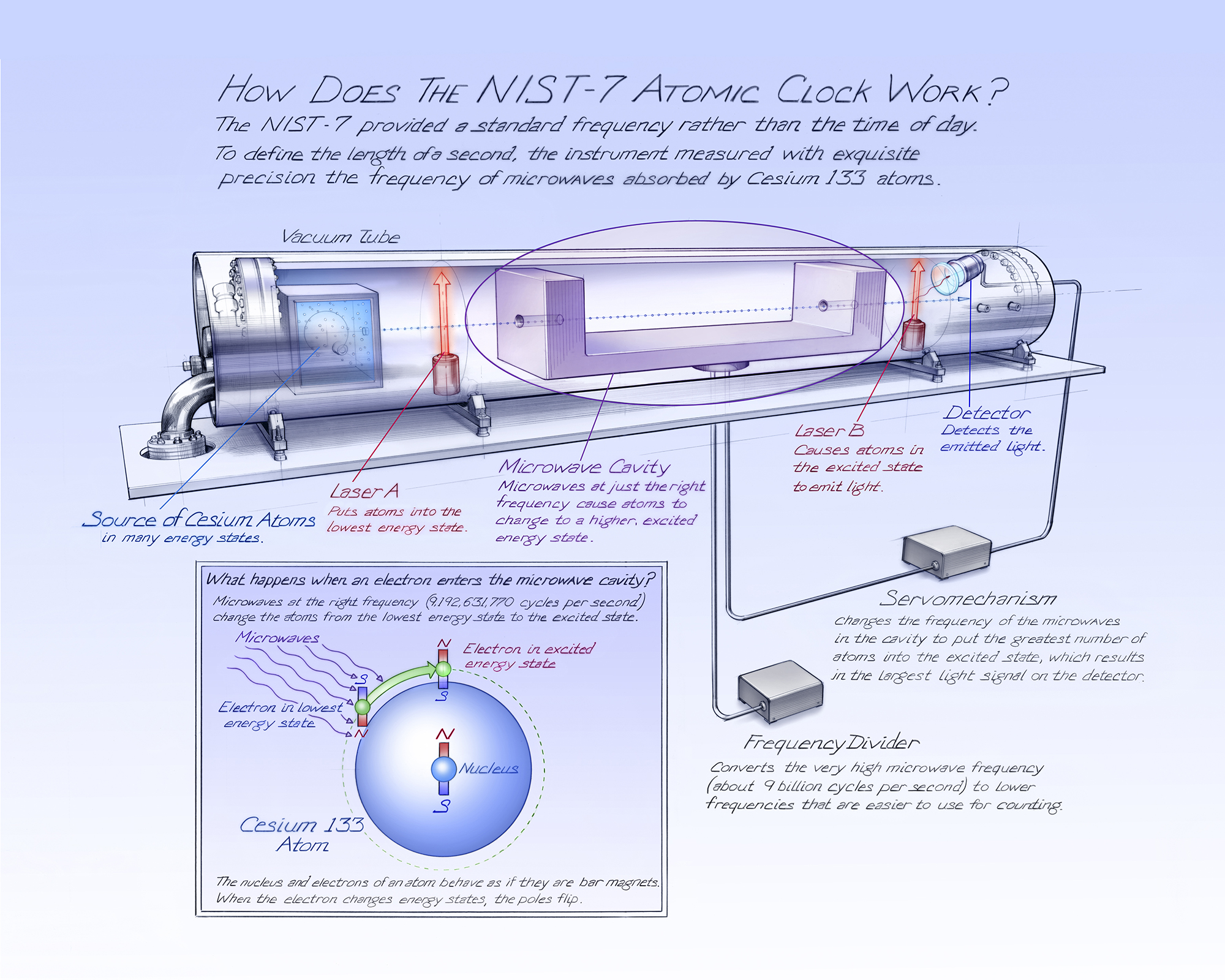500-si_hiw_atomic_clock_fa_flat_revised_7-17_copy.jpg

The NIST-7 provided a standard frequency rather than the time of day. To define the length of a second, the instrument measured with exquisite precision the frequency of microwaves absorbed by Cesium 133 atoms.




